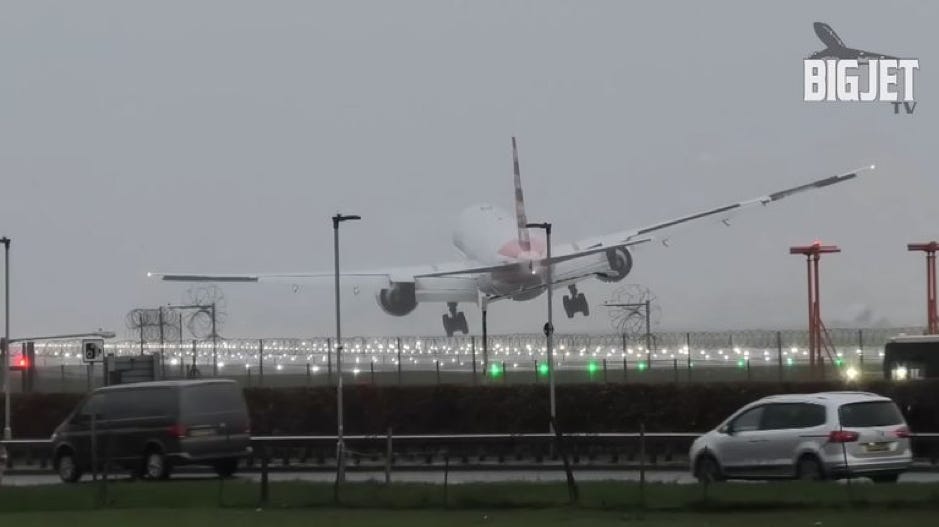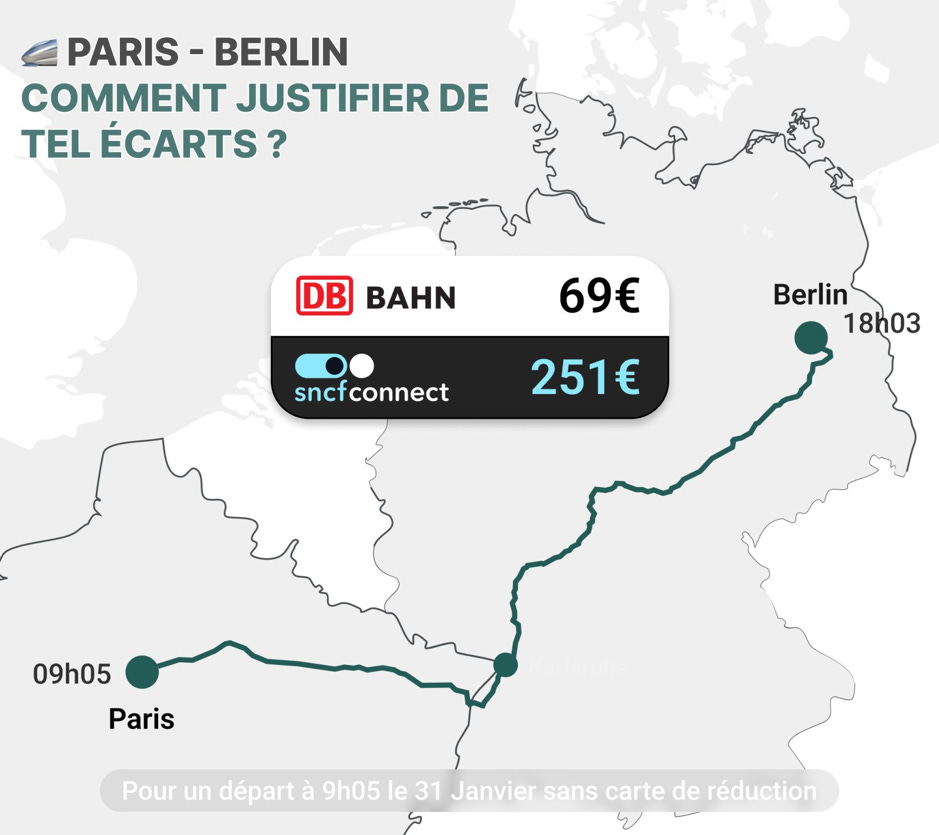The Blueprint #9
This week we talk about the rise in flight service disruptions frequency and intensity, as well as the ramp up of servives to cope with structural factors defavourising train options to planes.
What’s The Blueprint About?
What’s The Blueprint About?
Hello & best wishes for the Gregorian new year! As I mentioned in the last publication, I’ve changed the formula a bit. The Blueprint is a newsletter sent every 2 weeks exploring service design topics in relation with the planetary crisis and vice-versa, under 10 minutes.
This new formula might be refined as I go through, so please feel free to reach out to let me know what you think your positive and negative experience reading it, and recommendations if you think of anything: hello@sidneydebaque.com
The threat of climate change on transportations

During the public holidays, the recording of a plane trying to land at London’s Heathrow during storm Gerrit toured media. As highlighted by Todd Smith, this kind of landing is increasingly common as weather perturbations become more frequents and intense. A University of Reading research found turbulences to have increased by 55% on some routes as a result of global warming.
In an interview following University of Reading’s publication, Safe Landing co-founder Finlay Asher explains the full scope of climate change impact on aviation, from increasing perturbation intensity and unpredictability, service disruptions, or the need for lighter planes to cope with hotter air, among others.
From a planetary crisis & service design point of view:
It just broke, well at least it’s confirmed, 2023 is the hottest year on record, and by some estimations, the hottest for at least 100,000 years. Unfortunately, 2024 is already breaking 2023’s sea temperature record while it should currently be at its lowest. This leads to an increasing number of weather perturbations, which are increasing in intensity too. The impacts on the aviation industry are made clearer every year, threatening security, putting airports at risks from flooding, reducing suitable destinations, and as a result increasing price due to insurance price rising and capacity reduction as Asher explains.
Beyond the risks on aviation and passenger itself, this case proves a point that transition will happen in any ways. Aviation represents 2.5% of CO2 global emissions, but accounts for 3.5% of global warming if include the whole scope of global warming factors. The transition towards more sustainable transportation modes will either be decided and supported or will be undergone.
In the meantime, services will need to account for increasing risks and requirements by lowering number of passenger and cargo, increasing unit price, develop solutions to cope increasingly frequent service pertubations, and the resulting refund requests.
More services are trying to cope with structural issues in disfavour of train solutions

A service currently in beta is trying to help people find the best deals for train tickets. Indeed, Trainscanner is aggregating prices from different train companies, across borders, to offer the best prices to people. As the example in the image shows, the same train travel costs 3.6x more if bought through SNCF instead of DB. On a post (in French), Trainscanner co-founder Marc Sahuguet couldn’t understand the difference in pricing, and only emits hypothesis for such a pricing difference.
This type of service isn’t an exception as more external services are coming up with solutions to cope with structural issues in disfavour of train trips compared to planes. Indeed, the market set-up is very different, from local train companies operating parts of a journey, to a relatively more integrated trip when it comes to flying. Solutions such as Trainscanner, Trainline and Hurrail are trying to cope with such issues, by integrating multiple travel solutions into one pan and surfacing different companies’ price for comparison.
Other services such as Chronotrain take the problem from a different point of view, providing solutions to support new behaviours. Instead of looking at the time it takes to go somewhere, they aim to suggest destination based on the time it takes by train.
From a planetary crisis & service design point of view:
As I mentioned, markets have very different structures. From market openness, to tax regimes, to infrastructure, with current traveling trends and cost of living crisis, the train has some major disadvantages in comparison to flying when it comes to factors influencing the decision to use a service over another.
Yet it is one of the most sustainable solution for travelling, regardless of the distance. This efficiency at the systemic level comes with trade-offs at the behavioural level that seems to be at odds with current traveling trends and conceptions (e.g. holidays are considered as being abroad; we need to be as fast as possible to a destination to not waste holidays into travelling; etc.), as well as financial trades-off due to the fragmented market structure and untaxed plane fuel lead to additional costs for train transports at the charge of users.
In the meantime, services operate as stitch up to support transition towards train transport. Some do so by finding solutions to cut down the cost barrier, some by integrating the booking experience, and some other by supporting new behaviours aligned within planetary boundaries. Ultimately the solution will probably be in the middle, where we rethink the behaviours we travel, as well as the market structure and its impact on cost and siloed travelling journey.
Other noteworthy news:
[Policy / Circular Economy] Euronews and the European Commission have partnered for a short report to show the impact of the new and upcoming regulations to foster a circular economy. The journalist goes to visit different initiatives to that effect, from the most local and tactical ones to the most strategic ones.
→ Watch on Euronews (8 minutes)
[Urbanism / Transport] Paris’ Mayor is proposing to introduce a tiered parking pricing system to reduce the number of heavy vehicles in the city.
→ Read onThe Guardian
[Health] The planetary crisis is leading to a rise of pathogens and increases the risks of rare disease outbreak
→ Read on Grist
[Design] Jarrett Fuller pulls a list of his most important design books from 2023 to reckon with the pivotal moment in design and its role within the different crisis we face today.
→ Read on Forbes
[Visits] For people in London: The Natural History Museum is hosting the 2023 Wildlife Photography of the year until 30th June 2024. An interesting exhibition to further discover our environment, and our impact on it. A digital gallery is also accessible on their website.
→ Discover at The Natural History Museum
I’m a freelance service designer who helps public and private organisations intervene to mitigate the impact of the planetary crisis on humans and vice-versa.
You can contact me about for questions, comments or consulting at hello@sidneydebaque.com
